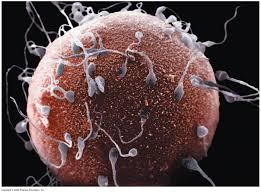So, your pregnancy test shows you might be expecting. Now what?
So, you have bought your Predictor pregnancy test and are waiting anxiously to see whether there will be two lines. The five minutes may seem like hours, but then time comes to a standstill when you see the pink second line. Depending on your situation this could be the most exciting feeling you have ever experienced or the most daunting. Whichever feeling or emotion you are experiencing, take a deep breath.
What to do next? The best suggestion is to wait a bit before announcing your news. We know it’s a big moment, but, unfortunately the little pink line doesn’t always mean a happy ending. Let’s get realistic for a moment. According to www.newhealthadvisor.com the percentage risk for miscarriages is: 75% of all miscarriages happen in the first two weeks, 10% in weeks three to six and then 5% in weeks seven to twelve. Due to these stats, it is normally recommended to not tell many people about your pregnancy for the first couple of weeks. Your family and close friends will support you through the first trimester. We do not want to instil a sense of fear but we do want you to know the facts.
Now for the guide to your pregnancy- there is none. Oh, almost every single mom you know will dish out advice left and right, and there are many books and a great deal information on the Internet, however, each and every pregnancy is different. You will probably end up doing what comes naturally anyway. You’ll be amazed how quickly you figure it out.
During the first trimester the small fertilized cell known as zygote changes into an apple sized foetus. Their body and limbs are growing, while the organs are taking shape and the little foetus now begins to move. Did you know by week six your baby starts to develop their arms, legs, hands and feet? Fingers and toes appear at around week ten.
In the first trimester your body, emotions and habits will start to change. Embrace this time and always find the positive in the changes. Shouting at your husband and then crying because he actually went to the garage at 2 am for that if-I-don’t-have-this-now-I’m-going to-lose-it packet of chips and chocolate, is absolutely allowed. Many women mention how their breasts enlarge and are sensitive, this is a normal process which gives you an excuse to buy some gorgeous new bras. “Evil personified” as one mom called it, is morning sickness and this is experienced by a vast majority of moms-to-be in the first trimester. There are many suggestions to help with this from drinking ginger tea to lemonade, but rather check with your doctor for any suggestions they may have.
The first trimester is one of great excitement, changes and nerves. Be gentle with yourself, these are big changes, and you don’t have to be okay with everything. It’s your pregnancy, and you can cry if you want to.
http://www.newhealthadvisor.com/9-Weeks-Pregnant-Miscarriage-Risk.html









